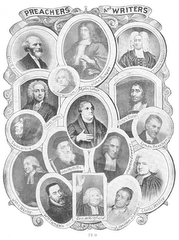Study: U.S. Religious Landscape Who's Growing and Who's Not
Study shows most detailed estimates to date of the size and demographic characteristics of religious groups in the U.S. and finds that religious affiliation is both very diverse and extremely fluid.
The first report of the U.S. Religious Landscape Survey finds that:
o More than a quarter of American adults have left the faith of their childhood in favor of another religion – or no religion at all. If change in affiliation from one type of Protestantism to another is included, roughly 44% of American adults have either switched religious affiliation, moved from being unaffiliated with any religion to being affiliated with a particular faith, or dropped any connection to a specific religious tradition altogether.
o The number of adults who say they are not affiliated with any particular faith today (16.1%) is more than double the number who say they were not affiliated with a particular religion as children. Men are significantly more likely than women to claim no religious affiliation. Among Americans ages 18-29, one-in-four say they are not currently affiliated with a particular religion. At the same time, the majority of people who were not affiliated with any particular religion as a child now say that they are associated with a religious group.
o The U.S. is on the verge of becoming a minority Protestant country. The number of Americans who are affiliated with Protestant denominations now stands at barely over 51%; as recently as the mid-1980s, in contrast, surveys found that approximately two-thirds of the population was Protestant.
o The Catholic share of the U.S. adult population has held fairly steady in recent decades. What this apparent stability obscures, however, is the large number of people who have left the Catholic Church. Approximately one-third of the survey respondents who were raised Catholic no longer describe themselves as Catholic; this means roughly 10% of all Americans are former Catholics. These losses, however, have been offset partly by the number of people joining the Catholic Church but mostly by the disproportionately high number of Catholics among immigrants to the U.S. The result is that the total percentage of the population that identifies as Catholic (roughly one-in-four) has remained fairly stable.
o Latinos currently account for nearly one-in-three adult Catholics in the U.S. and may account for an even larger share of U.S. Catholics in the future. Although Latinos represent just one-in-eight U.S. Catholics age 70 and older (12%), they account for nearly half of all Catholics ages 18-29 (45%). Immigrants also are disproportionately represented among several world religions in the U.S., including Islam and Hinduism.
o The Midwest most closely resembles the religious makeup of the overall adult population of the U.S. The South, by a wide margin, has the heaviest concentration of members of evangelical Protestant churches. The Northeast has the greatest concentration of Catholics, and the West has the largest proportion of unaffiliated people, including the largest proportion of atheists and agnostics.
o Among people who are married, nearly four-in-ten (37%) are married to a spouse with a different religious affiliation. This figure includes Protestants who are married to another Protestant from a different denominational family, such as a Baptist who is married to a Methodist.
o Hindus and Mormons are the most likely to be married (78% and 71%, respectively) and to be married to someone of the same religion (90% and 83%, respectively). Mormons and Muslims are the groups with the largest families; more than one-in-five Mormon and 15% of Muslim adults in the U.S. have three or more children living at home.
o Nearly half of Hindus in the U.S., one-third of Jews and a quarter of Buddhists have obtained post-graduate education, compared with only about one-in-ten of the adult population overall. Hindus and Jews are also much more likely than other groups to report high income levels.
o In sharp contrast to Islam and Hinduism, Buddhism in the United States is primarily made up of native-born adherents, whites and converts. Only one-in-three American Buddhists describe their race as Asian, and three-in-four Buddhists say they are converts to Buddhism.
To read more click here.




No comments:
Post a Comment